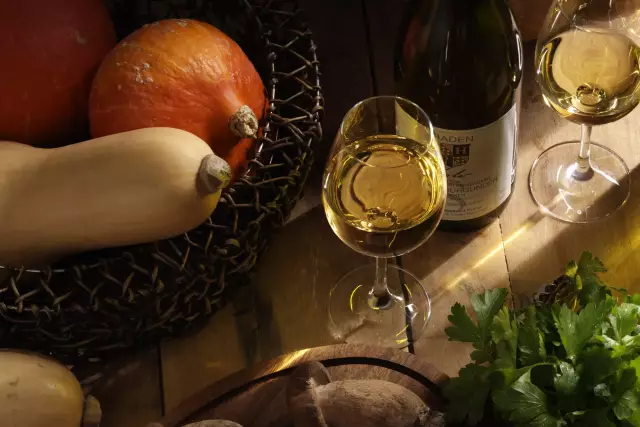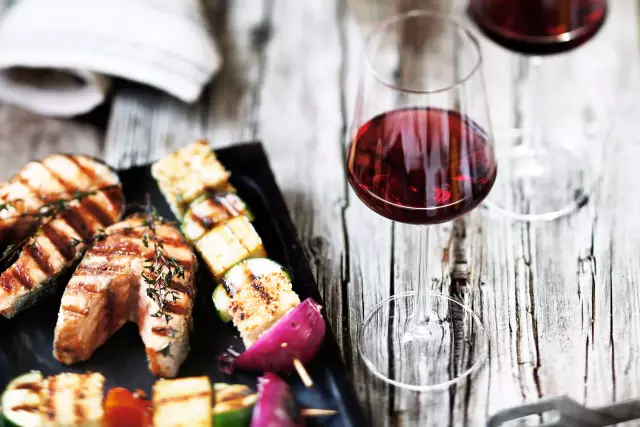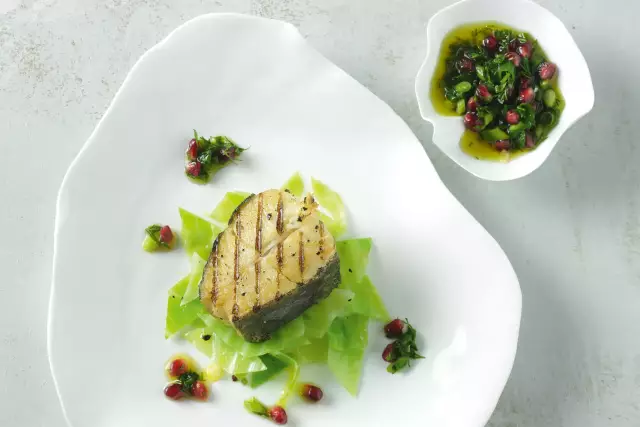Fondue & Wine
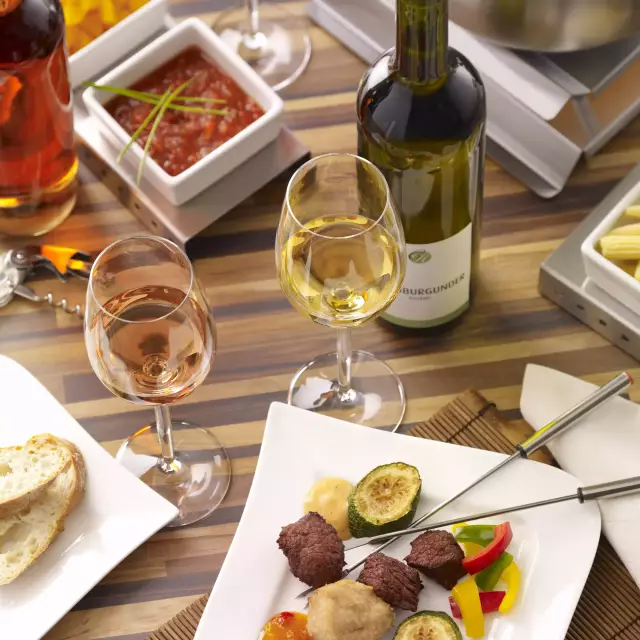
Long winter evenings and New Year’s Eve are excellent opportunities for a fondue or raclette in delightful company. And the enjoyment is enhanced if the culinary diversity is complemented by suitable wines. Ernst Büscher of Wines of Germany (DWI) recommends: “Ideally, you should already consider your guests’ wine preferences when you choose the style of the fondue.”
Facts
-
100 degrees
hot grease or broth
-
Infinite
variations to choose
A great variety of nuances is added by the many potential side dishes and condiments, which should also be considered when you chose a suitable wine. “The sauces are frequently more dominant in taste than the meat you are using,” Ernst Büscher explains. A fruity, slightly hot chutney, for instance, makes for a harmonious combination with a semi-dry Riesling. However, rich mayonnaise-based sauces correspond ideally with powerful Pinot Gris, and fragrant dips with an Asian touch like to enter into a playful liaison with fruity Pinot Blanc, Silvaner or a fresh Pinot Noir rosé.
The broad range of available fondues and raclettes offers a great diversity of exiting potential combinations with German wines. Wines of Germany (DWI) offers you a few guidelines for the suitable choice of wine:
Cheese fondue
is mostly prepared with melted Gruyère, white wine and spices. A powerful Pinot Gris or Pinot Blanc, for instance from Baden, is the right companion for this rich dish. Traditional side dishes for the cheese fondue are mixed pickles, small gherkins and sometimes Bündnerfleisch. The acidity of the pickles makes the fondue more easily digestible, but it has to be taken into account as well when choosing the right wine. The acidity is nicely offset by a Rheingau Riesling with a little residual sugar. This wine also adds a fresh touch when you’re enjoying the cheese all by itself.
Meat fondue
often offers a broad selection of beef, pork or poultry. The pieces of meat are cooked in hot oil and seasoned with a variety of dips. Within this broad range of aromas, a truly versatile wine such as a fruity-fresh Pinot Gris from the Pfalz is recommended. A Pinot Noir Weißherbst is another wine that can play alongside all kinds of meat fondue. Particular care needs to be taken if you’re serving hot dips. The spiciness increases the perception of alcohol. Thus hot dips should be accompanied by light wines such as Riesling or Pinot Blanc Kabinett. Suitable red wine companions for spicy dishes are Pinot Noir or Lemberger, for instance from Württemberg.
Chinese fondue
This variety uses a mild broth rather than hot oil. When cooked in the broth, the meat does not develop roast aromas and retains a milder taste. As a rule, the choice of dips reflects this mildness. A suitable wine should be able to play along with a broad range of aromas. A Silvaner or Portugieser Weißherbst from Rheinhessen is particularly suitable.
Fish fondue
a delicate variety of companionable enjoyment. In a fish fondue, you use firm-fleshed kinds of fish, but also prawns, shrimps or other seafood varieties. These are quickly cooked in a fish fond. In this case, wine recommendations focus on white wines, since their aromas are well suited to accompany the subtle diversity of aromas of the fish and dips. Classics such as Moselle Riesling are particularly good with zander, trout and redfish. Delicate monkfish and fresh prawns like to be accompanied by Pinot Blanc from the wine-growing regions Palatinate or Saale-Unstrut. In the company of richer dips – such as the popular aioli – a heartier Silvaner from Franconia works well.
Where does the term fondue come from?
Fondue derives from "fondre", French for "to melt", and is originally a dish with melted cheese.
Varietals

More recipe ideas
Japanese hollandaise succeeds with wasabi paste Salmon with Japanese hollandaise and green asparagus
Combine salmon with hollandaise and asparagus with a dry Riesling.
- 4x 150g Lachsfilet mit Haut
- 1 Limette
- 2 Zehen Knoblauch
- 4 EL Honig
- 10 EL Sojasauce
- 200g Butter
- 4 Eier
- 1 EL Joghurt
- 2 EL Reisessig
- 2 EL Wasabipaste
- 500 g Grüner Spargel
For the marinade, finely chop the garlic first. Wash the lime in hot water, grate the zest and squeeze out the juice and bring everything to the boil with the honey and soya sauce. Put to one side.
Now prepare the Japanese hollandaise: Bring 180g butter to the boil. Place the egg yolks, yoghurt, rice vinegar, wasabi paste and a pinch of salt in a tall measuring jug and mix with a hand blender. Gradually mix the boiling (!) butter into the egg yolks using a hand blender. Season the hollandaise with salt and pepper to taste and keep the measuring jug warm in hot water.
Peel the bottom third of 500 g green asparagus and cut off the ends. Melt 1 tbsp butter in a large pan. Add the asparagus to the pan, pour in 50 ml water and season with salt and pepper. Cover and bring to the boil briefly.
Fry the salmon fillets on the skin side in a little oil for about 4 minutes. Turn the salmon and fry for a further 2 minutes. Then turn again and baste with the marinade. Remove the salmon from the pan and reduce the marinade until thick. Brush the salmon with it. Serve the salmon with the hollandaise and asparagus. Enjoy your meal!
Wine recommendation:
WINE TIP: Dry Rielsing
- Riesling (trocken)
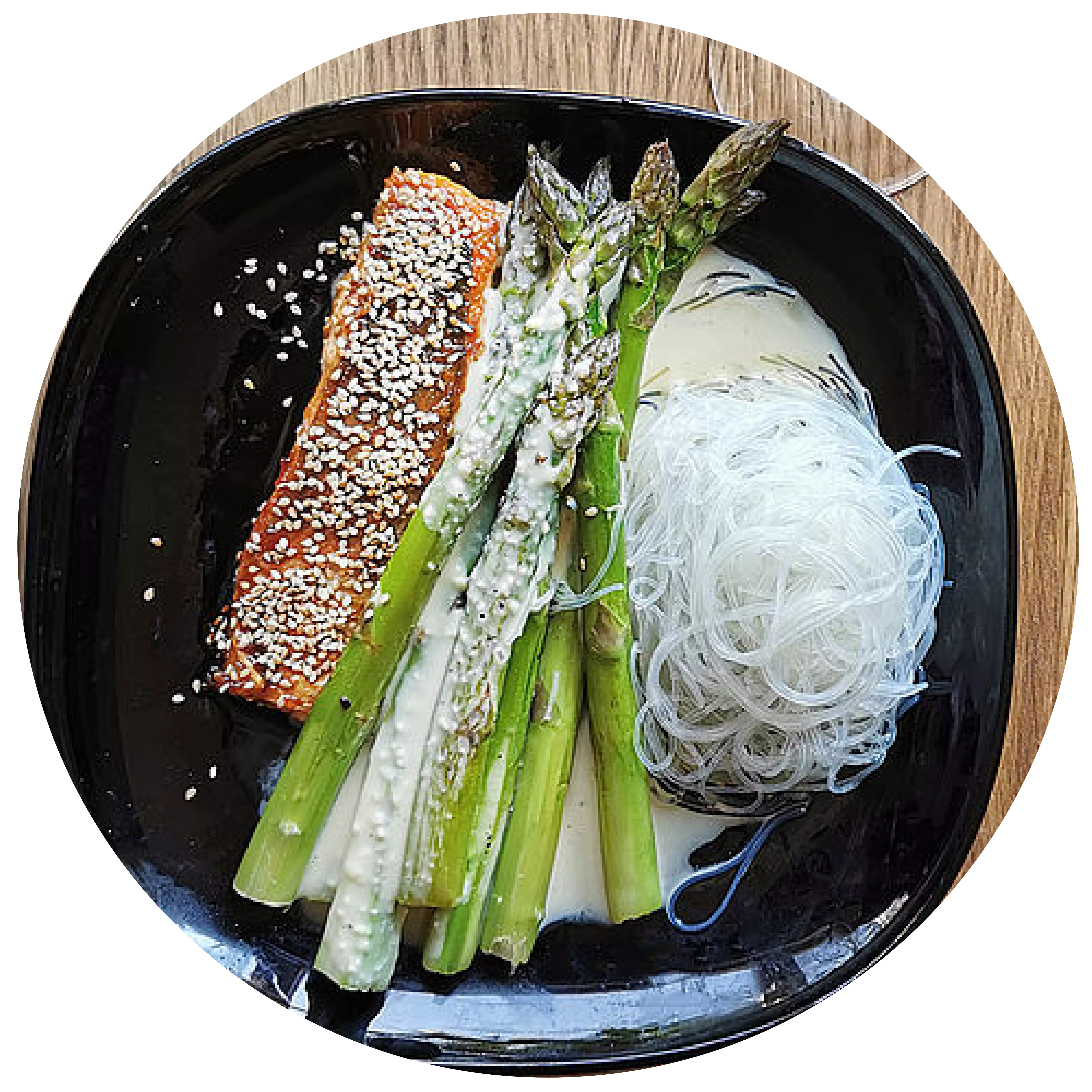
with dry sparkling wine Sparkling wine and lime dessert
with dry sparkling wine
- 300ml Winzersekt
- 4 Limetten
- 100g Zucker
- 30g Speisestärke
- 100g Butterkekse
- 50g ungesalzene Butter
- 2 Eiweiße
- 50g grieschicher Joghurt
- 150g Schlagsahne
Pour the sparkling wine and sugar into a pan. Chill the remaining sparkling wine. Wash 1 lime with hot water and finely grate the zest. Halve the lime and 2 others, squeeze out the juice and mix with the cornflour. Pour everything into the pan and bring to the boil briefly. Remove the pan from the heat and chill the cream in the fridge.
Fill the shortbread biscuits into a freezer bag, crush with a rolling pin and place in a bowl. Melt the butter in a pan, pour over the crumbled shortbread biscuits, add a pinch of salt and mix well. Leave to cool briefly, divide half into large wine glasses and press down firmly.
Cut the lime into slices. Beat the egg whites with salt until stiff. Stir the yoghurt into the chilled champagne and lime cream. Whip the cream until stiff and fold into the cooled cream, one after the other, together with the beaten egg whites. Spread half over wine glasses, add another layer of shortbread biscuits and finish with a layer of cream. Garnish with lime slices and pour in the remaining sparkling wine. Toast and enjoy!
- Riesling (trocken)
- Pinot Blanc (trocken)
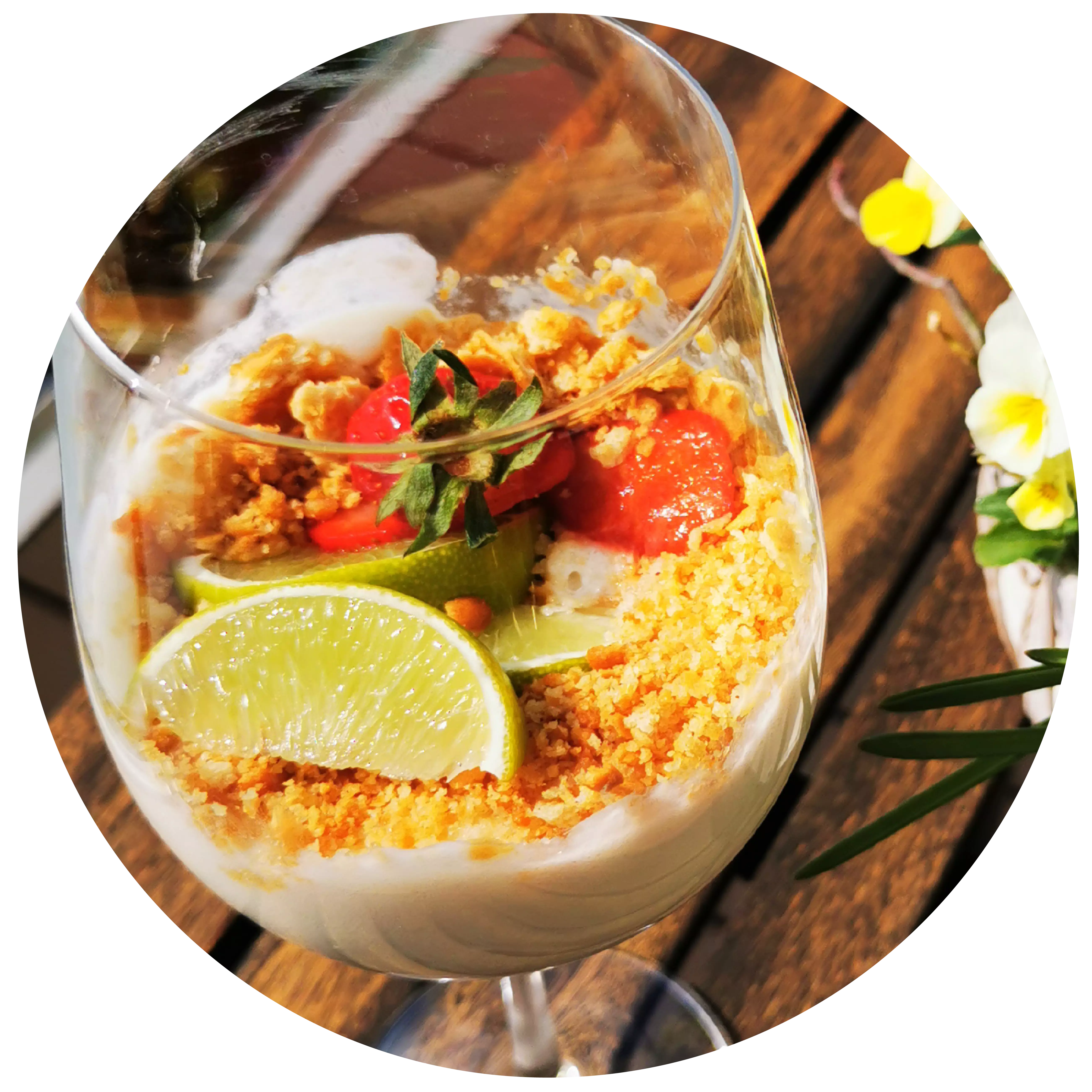
with pears, beans, parsley root and black walnuts Venison medallions
with pears, beans, parsley root and black walnuts
- 12 Stück Rehmedaillions (a 80g)
- 30 Gramm gebratene Speckstreifen
- 200 ml Bechamelsauce
- 3 EL Sonnenblumenöl
- 8 kleine Petersilienwurzeln mit Grün (alternativ Knollensellerie)
- 6 - 8 breite Schnippelbohnen
- 1 große Birne
- 4 - 6 schwarze Walnüsse
- 100 ml Wildfond
- 2 EL Butter
- 2 Stängel glatte Petersilie
- nach Geschmack Salz
Preheat the oven to 180 °C top and bottom heat. Clean, peel and trim the parsley roots. Clean the beans and cut into diagonal pieces. Blanch the parsley roots and beans separately in boiling salted water and rinse immediately in iced water.
Cut the walnuts into eighths and warm in the game stock. Wash the unpeeled pear, cut into eighths, remove the core and cut into thin slices. Fry the venison medallions on both sides in oil, then finish cooking in the oven for approx. 3 - 5 minutes.
In the meantime, toss the beans and parsley roots in melted butter and season with salt. Arrange the vegetables with the black walnuts and pear slices on large plates. Place the medallions on top, garnish with game stock, Béchamel sauce and bacon strips.
Tip: You can make your own black walnuts. To do this, prick the walnuts all over with a fork or skewer and place in water for 10 days. Change the water every day so that the tannic acid can drain off. Boil the nuts 3 times in salted water until they are deep black. Simmer with bay leaves and peppercorns for approx. 20 minutes until soft. Layer in preserving jars and cover with syrup. The nuts can be kept for approx. 1 year.
- Spätburgunder / Pinot Noir (trocken)
- Pinot Gris (trocken)
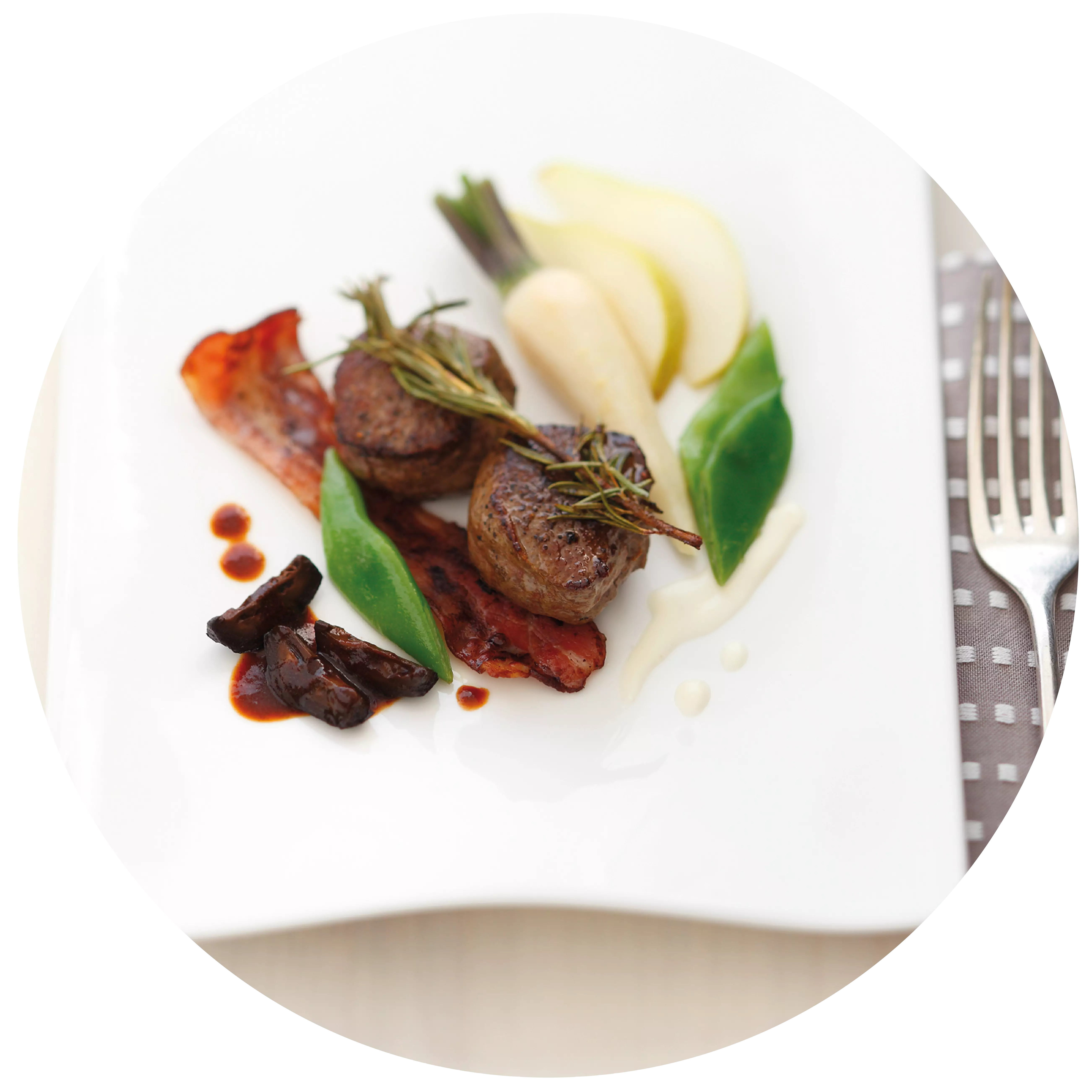
a Christmassy dessert Plum roaster with cinnamon ice cream
a Christmassy dessert
- 1 kg Zwetschgen (frisch oder TK)
- 100 Gramm Zucker
- 0.5 TL gemahlener Zimt
- Eine Prise Nelkenpulver
- 50 ml Pflaumenschnaps
- 50 Gramm dunkler Rohrzucker
- 2 EL alter Balsamicoessig
- 200 Gramm Zucker
- 4 Eigelb
- 500 ml Sahne
Plum rings:
Wash, deseed and quarter the plums. Spread the sugar evenly in a non-stick pan and melt slowly over a medium heat. Increase the temperature and immediately add the fruit, schnapps and spices. Stir until the mixture caramelises.
Stir in the muscovado sugar and balsamic vinegar, spread onto a cold plate after approx. 3 minutes.
<p
<p>Cinnamon ice cream:
Combine the sugar and egg yolks and stir the two ingredients over a bain-marie until frothy.
Whip the cream, then carefully mix both mixtures and add three teaspoons of cinnamon. Carefully mix the cinnamon into the mixture again.
Pour the finished mixture into any (cake) tin or small dish, cover with aluminium foil and place in the freezer for at least three hours.
Place the plums on four deep plates or small bowls, cut off 2 – 3 ice lollies each and place on top, serve immediately.
- Gewürztraminer (trocken)
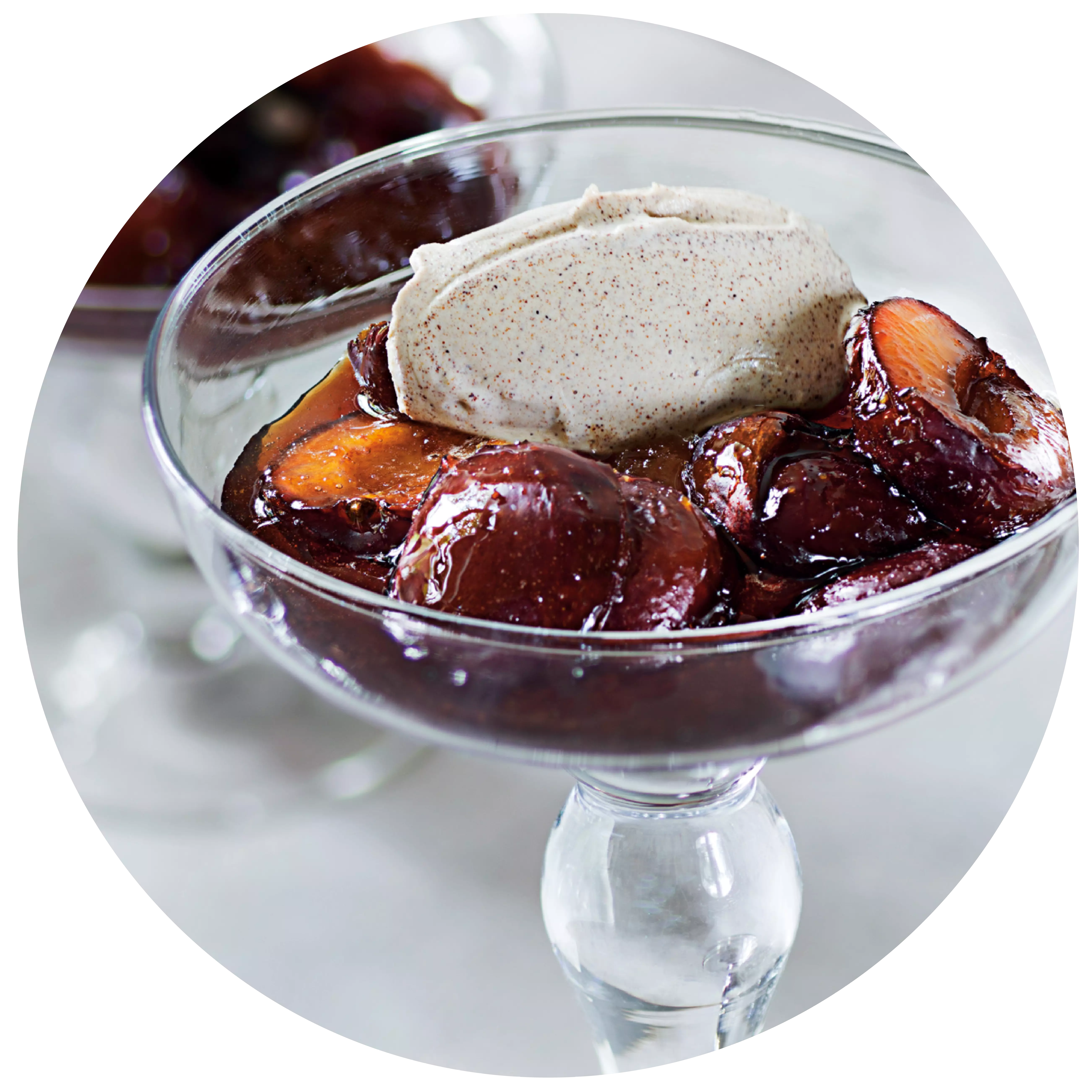
Events
-
Show
winetasting in our winery - blind tasting
Mainz-Hechtsheim


